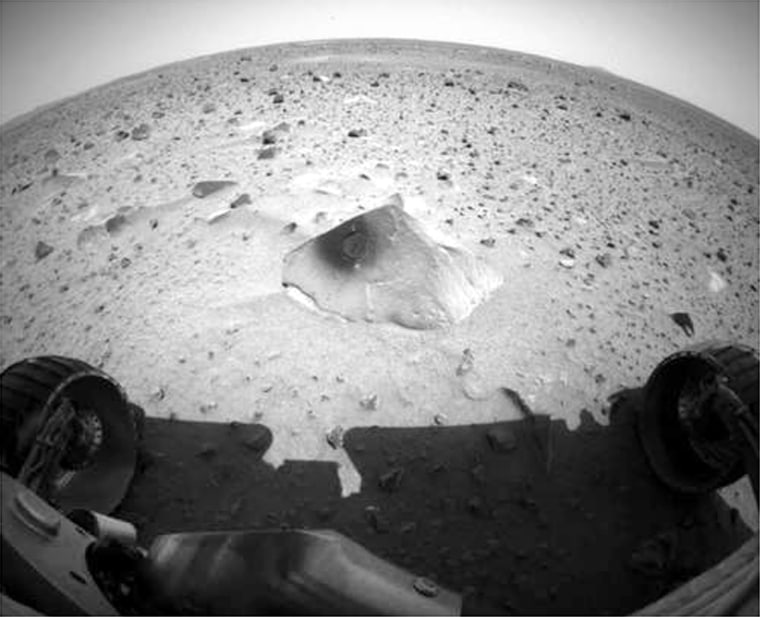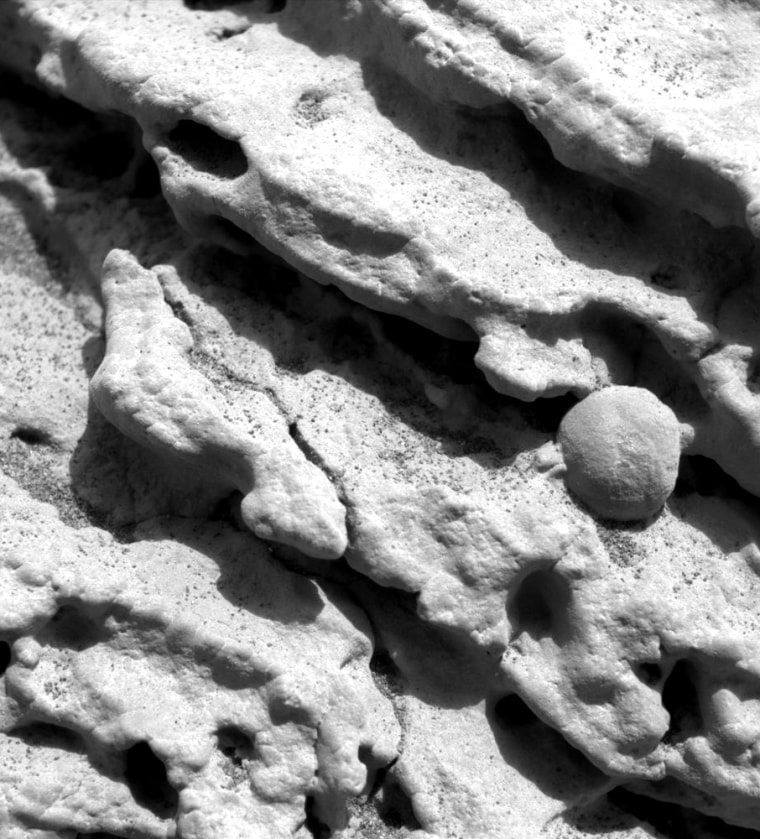NASA’s Opportunity rover took microscopic images Sunday of a bedrock outcropping on the surface of Mars that scientists hope will answer questions about whether the rock could have formed in water.
The images will help scientists understand what the environment was like when the rock was formed, said Jim Erickson, deputy mission manager.
Opportunity’s camera spotted the outcropping, which is about 50 feet (15 meters) long and a foot (30 centimeters) high, within days of its Jan. 24 landing. It is the first bedrock outcropping seen on any Mars mission.
The microscopic images and other tests could shed light on whether water — a key ingredient for life — ever flowed freely on Mars. NASA planned to use an instrument Monday to determine the rock’s chemical makeup.
Studying a hole on Mars
Also Sunday, scientists were studying data that the Spirit rover had gathered Saturday by drilling a small hole into the sharply angled rock dubbed Adirondack.
It was the first rock to be drilled by either of the two rovers on the Mars mission.

Scientists had wanted to move the Spirit rover Saturday but couldn’t because of a safety feature that scientists are having trouble deactivating. They said overriding the feature would be fairly simple. Spirit had been disabled by computer problems for more than two weeks, but scientists declared Friday that the rover was completely "healed."
Opportunity, meanwhile, remained stationary as it examined the bedrock outcropping. It was expected to move along the rock formation late Sunday.
The rovers are exploring opposite sides of the planet as part of their $820 million mission. The objective of the mission is to determine whether liquid water persisted on ancient Mars long enough to support the development of life.
Each of the rovers was designed for a primary mission lasting 90 days, but mission managers say the solar-powered spacecraft could keep going for a significantly longer time.
